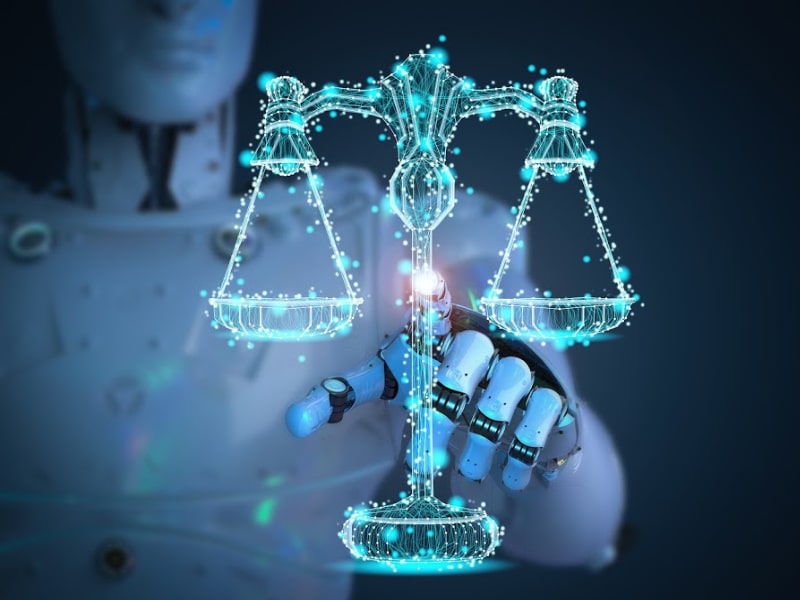
Artificial Intelligence applied in the legal environment
Artificial Intelligence in the legal environment brings doubts to lawyers. After all, can such technology replace people? In order to answer doubts like the previous one, a lot is asked about the positive and negative impacts of applying AI (Artificial Intelligence) in legal matters.
It is worth remembering that, currently, the legal process suffers from slowness in the execution of judgments and other activities. The manual and extensive work to read and analyze all the necessary information is tiring and slows down the work of those who practice law. The time required to execute it prevents the lawyer from performing other actions more interesting to your law firm or institution.
A strategic option that has been gaining ground in advocacy is the use of a tool of Judiciary, guiding the lawyer, office or legal department on the behavior of justice.
Here begins the role of Artificial Intelligence. Systems that can learn with experience are extremely useful to assist with the legal process, without necessarily replacing the lawyer. AI has the ability to analyze information, discard unnecessary documents for trial, track changes in the law, etc.
Want to know how all this is possible? Learn more about IA and find out how it can help the work of lawyers. Understanding this technology is fundamental to follow the new directions of the market. Check it out below!
What is Artificial Intelligence?
When we talk about Artificial Intelligence, we are referring to an area of computer science. Its goal is to develop systems that have the ability to perceive patterns and reason, simulating the abilities of human intelligence.
In more practical terms, they are mathematical and statistical algorithms, which allow machines to formulate constructions as a thought. Another aggregate function is the interpretation of messages and facial expressions.
Basically, machines are able to learn from information and data connections, similarly to the human neural system.
How can it be applied in the legal environment?
Artificial Intelligence promises a promising future in advocacy. The heavy routine due to the reading of processes, laws and other activities pertinent to the function can be optimized with AI.
There are, today, systems that can cross information to collaborate with decisions in lawsuits. In other words, the systems can help to develop manual and stressful processes, enabling humans to take care of intellectuals.
Another functionality that Artificial Intelligence has allowed is a supercomputer that analyzes and computes case files, being able to answer which of them are not useful for the resolution of the case.
It is important to emphasize that such technology will not replace lawyers. Its features come to meet a need of the legal, highly choked with the enormous flow of processes and data. It ensures greater agility to analyze the entire work demand, helping professionals with this routine.
How to use this technology in law firms?
All law firm processes can be optimized with Artificial Intelligence. Its ability to analyze and delete irrelevant information helps the lawyer to work only with the data really needed, reducing time spent and fatigue.
AI systems also monitor laws, giving the status of changes. Or, they even warn when legislation involved in a case you’re working on has changed that could affect the process.
It is clear that the role of Artificial Intelligence in advocacy is that of a helper. That is, it will do the repetitive and routine activities, which are responsible for delaying the progress of the work.

Where to start implementing it?
Currently, there are some tools that are already available for implementation, in order to optimize the day-to-day and increase the productivity of law firms. Several legal softwares offer amazing features for the office management system.
Most of these systems perform many interesting tasks to speed up the practice of law. One of them is the reading and analysis of subpoenas. Then, after learning from standards, it indicates the best action to be taken.
It is estimated that it takes an attorney about 3 minutes to read a subpoena and decide what action to take. It seems little, but for those who receive a large amount of such documents per day, a lot of time can be demanded for the activity in question.
These examples are the highest level of Artificial Intelligence currently applied in law firms. However, it is possible to implement similar measures, which are more accessible. There are legal softwares that operate in a similar way and also have the objective of helping the work of lawyers.
Such systems seek information that, before, would be sought manually and present it in an optimized and clear manner, generating practicality. Besides, they show when there is movement in processes that you follow.
The AI technology can modify the way the legal work is done, resolving the grievous and exhausting issues, filtering the information so that the professional deals only with relevant issues.
Thus, the lawyer has more time to develop his strategies of persuasion, increase his social connections etc. In other words, humans start to dedicate themselves to the more intellectual and less procedural stages.
The new lawyers will be able to worry about developing and practicing the skills that only humans have to capture new clients and defend cases. Some characteristics, such as creativity, persuasion, empathy and ability to develop social relationships will be put into focus.
Artificial Intelligence in the legal environment should be seen as an ally to professionals in the field. Its goal is to optimize the extensive and tiring work routines of reading and process analysis. Counting on technology to speed up the daily routine and facilitate the lawyer’s work gives freedom to the professional to devote himself to other tasks previously left aside.






